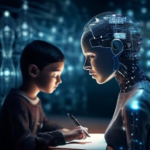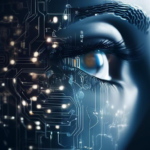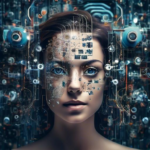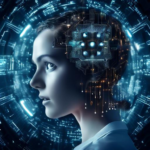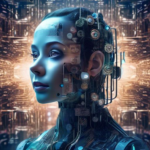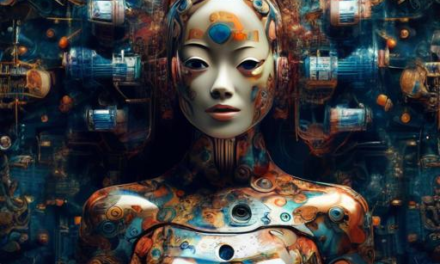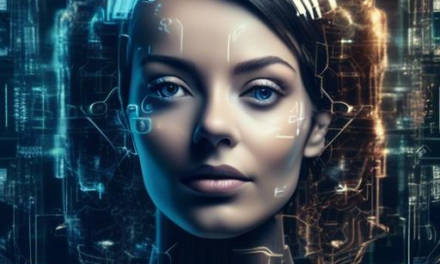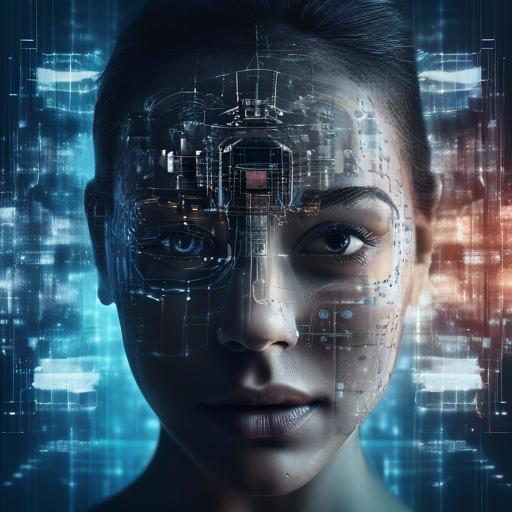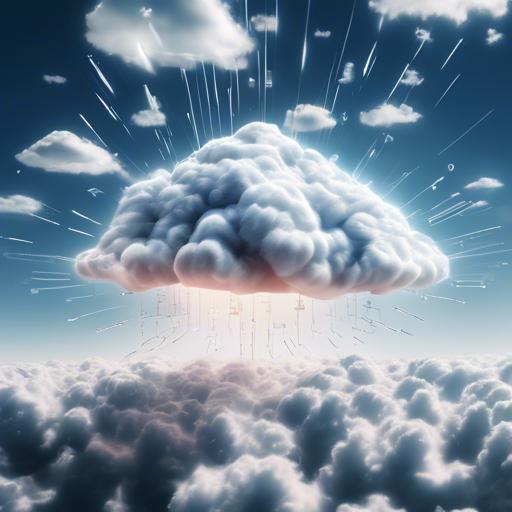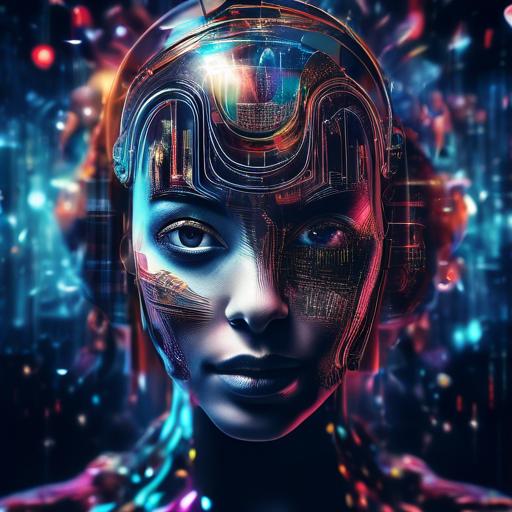In a world where algorithms paint masterpieces and machines wield digital brushes, the mesmerizing allure of Artificial Intelligence in art is unmistakable. As pixels transform into breathtaking vistas and code births creations that challenge our notions of beauty, we stand at the crossroads of innovation and artistry. Yet, amidst the magic and the marvel, there’s a guiding hand that remains ever more crucial—human oversight. This oversight doesn’t merely serve as a checkpoint; it is the soul that ensures AI art remains a vibrant, ethical, and profoundly human endeavor. Join us as we delve into why human intuition, emotion, and wisdom are the keystones in the flourishing world of AI-generated art, and discover how our unique touch makes all the difference in this brave, new artistic frontier.
Table of Contents
- Balancing Creativity: Where Human Insight Elevates AI Art
- Ethical Considerations: Guiding AI with a Human Hand
- Preserving Cultural Integrity through Thoughtful Oversight
- Emotional Nuances: The Human Role in Artistic Expressions
- Guardians of Originality: Ensuring Unique Visions in AI Creations
- Navigating the Legal Landscape: Protecting Artists’ Rights
- Collaborative Synergy: Artists and AI Co-Creating Masterpieces
- Accountability and Transparency: Building Trust in AI Art
- Crafting Future Pathways: Recommendations for Responsible AI Art
- Insights and Conclusions
Balancing Creativity: Where Human Insight Elevates AI Art
Artificial Intelligence has undoubtedly transformed the art world, offering boundless possibilities and pushing the boundaries of creativity. However, it is through human insight that these creations glean their true emotional depth and resonance. While AI algorithms can master techniques and styles, it is the nuanced understanding of context, culture, and emotion that humans provide, breathing life into the pixels and strokes formed by machines.
Consider the dynamic duo of an artist and their AI counterpart. The machine generates a plethora of unique designs within seconds, but it is the artist who selects and refines the piece that will capture hearts and convey a specific message. This partnership thrives on the strength of both parties, maximizing their individual strengths to create something truly exceptional. Human oversight ensures that art produced by AI is not just visually appealing but also rich in meaning and narrative.
- **Contextual Understanding:** AI lacks the ability to comprehend historical and cultural contexts, which are vital in producing meaningful art. Human artists fill this gap effortlessly.
- **Emotional Depth:** Emotions are the soul of any artwork, a quality that AI cannot replicate. It is the human touch that imbues AI-generated art with emotional complexity.
- **Ethical Considerations:** Humans are crucial in maintaining ethical standards in AI art, making sure that the generated works respect cultural sensitivities and do not propagate harmful stereotypes.
| Dimension | AI Capability | Human Insight |
|---|---|---|
| Technical Mastery | High | Medium |
| Emotional Depth | Low | High |
| Contextual Relevance | Minimal | Extensive |
This synergy between human and AI can also be seen in collaborative projects, where artists leverage AI tools to enhance their creative processes. The AI takes care of the repetitive and technical aspects, allowing artists to focus on injecting their unique perspectives and creative flair. This collaboration is akin to a dance, where both partners must remain attuned to each other’s moves to create a harmonious and captivating performance.
Ethical Considerations: Guiding AI with a Human Hand
As we navigate the evolving landscape of artificial intelligence in the artistic realm, the imperative for mindful human oversight becomes increasingly evident. It’s not just about creating magnificent pieces of art but ensuring these creations adhere to ethical norms. Integrating a human touch in the AI art process can help mitigate potential pitfalls and provide a moral compass that guides artificial ingenuity.
Here are several essential aspects to consider:
- Bias and Fair Representation: AI systems are trained on vast datasets, which may unknowingly include biased information. Human oversight ensures AI-generated art reflects diversity, pluralism, and fair representation of varied cultures and communities.
- Authenticity and Plagiarism: It’s crucial that AI does not infringe on copyrights or produce derivative works without proper attribution. Human intervention can scrutinize AI outputs to maintain originality and uphold intellectual property laws.
Balancing creativity with ethical diligence involves a structured approach:
| Step | Human Responsibility | AI Contribution |
|---|---|---|
| Data Examination | Ensure diversity and unbiased datasets | Analyze and learn |
| Output Review | Verify originality and ethical integrity | Generate and modify |
Humans play a pivotal role in making ethical judgments that AI alone cannot navigate. By blending human insight with AI capabilities, the art world can enjoy a harmonious surge of innovative yet morally sound creations. This partnership not only enriches the creative process but also builds trust in AI-driven artistic endeavors.
Preserving Cultural Integrity through Thoughtful Oversight
In the evolving realm of AI-driven art, human oversight remains an essential guardian of cultural authenticity and integrity. Through a nuanced blend of technological innovation and human discernment, we ensure that the rich tapestry of global cultures remains undistorted. When AI algorithms are left unchecked, they can unintentionally perpetuate stereotypes or misrepresent traditional narratives, underlining the importance of a human touch to guide these creative processes.
Key factors in preserving cultural integrity include:
- Historical Context: Understanding the significance and origins of traditional motifs and practices.
- Ethical Representation: Ensuring that diverse cultures are portrayed respectfully and accurately.
- Community Involvement: Engaging with cultural communities to validate and appreciate their input.
Consider, for instance, traditional Japanese ukiyo-e art. AI can replicate the visual style with remarkable precision, but without human oversight, it might miss the subtle cultural nuances and the soul embedded in the work. Human curators can ensure that these digital reproductions stay true to historical and cultural contexts, enhancing their educational and artistic value.
| Aspect | Human Oversight Role |
|---|---|
| Historical Accuracy | Validates the historical context of artistic elements. |
| Ethical Standards | Guarantees respectful representation of cultures. |
| Creative Authenticity | Maintains the genuine essence of original creations. |
In this symbiotic relationship, AI acts as an innovative tool, while human oversight becomes the cultural steward. This delicate balance ensures that artistic endeavors powered by AI contribute positively to the broader cultural landscape. By integrating thoughtful oversight, we enrich the dialogue between technology and tradition, fostering a respectful and vibrant artistic future.
Emotional Nuances: The Human Role in Artistic Expressions
Emotional resonance in art often originates from the mix of human experiences, feelings, and imperfections that no algorithm can fully capture. While AI can generate impressive imagery and music, it lacks the intrinsic understanding of emotions that human artists bring. This is where human oversight becomes not just beneficial but essential.
Art requires human touch for:
- Context – While AI can produce thematic pieces, it is the human artist who imbues them with context.
- Subtlety – Nuances in expression, such as the delicate blend of colors or fine gradations of emotion, often elude AI.
- Ethics – Human oversight ensures that art respects cultural sensitivities and moral standards.
Consider an AI-generated painting. It might utilize sophisticated techniques and complex patterns, but the real magic unfolds when a human artist interprets and refines it, injecting personal sentiments and life stories. This collaboration not only enhances the artwork’s quality but also ensures it connects deeply with audiences on an emotional level.
| Aspect | AI Contribution | Human Contribution |
|---|---|---|
| Technical Execution | Precision, Speed | Creativity, Emotional Depth |
| Completeness | Generates Initial Art | Provides Final Touches |
| Authenticity | Data-Driven Outputs | Personal Experience |
In music composition, the human role becomes even more evident. AI can craft melodies and harmonize notes but struggles with the authentic craft of storytelling through music. A musician’s interpretation, emotional backstory, and intimate performance breath life into otherwise mechanical compositions.
By blending AI capabilities with human intuition and emotion, we can achieve a synergy that pushes the boundaries of artistic expression. Human oversight ensures that AI art isn’t just visually or sonically appealing, but also profoundly touching and genuinely reflective of the human condition.
Guardians of Originality: Ensuring Unique Visions in AI Creations
In the era of burgeoning artificial intelligence, the role of the human creator stands as a sentinel, ensuring that AI-generated art does not devolve into a repetitious echo of pre-existing works. Human oversight serves as the custodian of creativity, guiding the AI’s vast capabilities to craft genuinely original and soulful pieces. This collaborative dance between man and machine not only augments technological potential but also preserves the unique essence that defines true artistry.
- Inspiration vs. Appropriation: While AI can shuffle through a plethora of existing creations to form something “new,” it often skirts dangerously close to mere imitation. Human curators must step in to ensure that these inspirations do not turn into appropriations, preserving the fine line between homage and plagiarism.
- Ethical Considerations: Artists temper AI’s outputs with ethical guidelines, ensuring that the final pieces do not inadvertently perpetuate biased or culturally insensitive narratives. A nuanced human touch can discern context that AI might miss, fostering a responsible and inclusive artistic landscape.
- Emotional Resonance: AI can simulate emotion but lacks genuine emotional experience. Human involvement imbues art with layers of feeling and depth, striking chords that only another human can fully appreciate.
When we examine the intersection of AI capabilities and human creativity, the need for dynamic synergy becomes evident. Imagine wandering through an art exhibition where each painting has been only slightly modified by an algorithm, lacking authentic vision. This scenario underscores the importance of humans mentoring AI, ensuring originality flourishes amid machine-generated landscapes.
| Aspect | Human Role | AI Role |
|---|---|---|
| Creativity | Vision and Inspiration | Combinatorial Power |
| Ethics | Guidelines and Sensitivity | Data Analysis |
| Emotion | Authentic Experience | Simulation |
The symbiosis between AI and human creators results in works that are not just technically proficient but also steeped in authenticity and genuine emotion. As guardians of originality, humans ensure that every brushstroke of an AI-generated artwork tells a story uniquely its own, transforming it from a mere output into a masterpiece that resonates deeply with its audience.
Navigating the Legal Landscape: Protecting Artists’ Rights
In the ever-evolving landscape of art creation, the introduction of AI has caused a seismic shift, bringing both innovative opportunities and complex challenges. The integration of artificial intelligence in generating art has indeed provided artists with new creative tools. However, to ensure artists’ rights are adequately protected, there’s a pressing need for human oversight in this domain.
**Artists must remain vigilant** and proactive in the face of this technological revolution. Key aspects where human oversight is crucial include:
- Copyright Ownership: Determining who holds the copyright to AI-generated art is a gray area. Is it the programmer, the user, or the AI itself?
- Ethical Usage: Ensuring that AI art doesn’t infringe upon existing works or propagate biased or harmful content.
- Attribution: Proper attribution practices must be established to recognize the contributions of both human and artificial creators.
Failure to address these areas can lead to a host of legal complexities, which might undermine an artist’s ability to profit from or take credit for their work. Artists need to engage with legal professionals who are knowledgeable about the intersection of technology and intellectual property laws. This collaboration is essential for developing robust frameworks that can adapt to the rapidly evolving nature of AI art.
Consider these key actions that can be taken:
| Action | Purpose |
|---|---|
| Consult Legal Experts | To understand and navigate emerging laws and regulations |
| Establish Clear Contracts | To define ownership, usage rights, and profits clearly |
| Stay Informed | To keep up with changes in technology and law |
By embracing proactive measures and ensuring that human oversight remains a pivotal part of the creative process, artists can safeguard their rights and continue to innovate fearlessly. It’s about finding a balance that allows the creative spark to flourish while making certain that those who breathe life into these AI tools are adequately acknowledged and protected.
Collaborative Synergy: Artists and AI Co-Creating Masterpieces
Imagine a world where human imagination and technological prowess align seamlessly, producing astounding works of art. This vision isn’t confined to science fiction; it is rapidly becoming a reality. As artists and AI join forces, the potential for innovation in art expands tremendously. However, the importance of human oversight in this collaborative process cannot be overstated.
- Emotional Resonance: While AI can mimic styles and techniques, it lacks emotional intelligence. Human artists inject their experiences, feelings, and unique perspectives into their work, creating a connection that pure algorithms can’t replicate.
- Ethical Considerations: Artists are guides and gatekeepers, ensuring that the ethically ambiguous territory in AI-generated work is navigated thoughtfully and responsibly.
To better understand the influence of human guidance, consider the following aspects where oversight is crucial:
| Aspect | AI Contribution | Human Guidance |
|---|---|---|
| Originality | Pattern recognition, data synthesis | Creative vision, context understanding |
| Ethics | Algorithmic compliance | Moral judgement, cultural sensitivity |
| Emotional Depth | Style imitation | Personal experience, emotional nuance |
Ultimately, the collaboration between artists and AI can produce masterpieces that neither could create alone. Through maintaining a balance where technology complements human intuition and creativity, we safeguard the authenticity and depth of the artistic process. The fusion of machine efficiency with human passion creates not just art, but a narrative that resonates deeply with audiences.
Accountability and Transparency: Building Trust in AI Art
In the realm of AI-generated art, the roles of accountability and transparency cannot be overstated. Art created by artificial intelligence often prompts questions about ownership, originality, and ethical implications. It is essential that creators, developers, and users understand the significance of maintaining **human oversight** to ensure these creations adhere to ethical standards and foster trust among audiences.
Firstly, **maintaining transparency** in the process of AI art creation is crucial. This involves being open about the technologies and methodologies employed. When audiences and stakeholders are aware of how an AI algorithm operates and what datasets it is trained on, they are more likely to trust the integrity and authenticity of the artwork. Here are a few ways to enhance transparency:
- **Clear documentation** of the AI’s data sources and training processes.
- **Accessible explanations** of the AI’s decision-making steps.
The next component, **accountability**, ensures that there is a human element responsible for the oversight of the AI’s creations. This human involvement is vital in monitoring, guiding, and correcting the AI’s output when necessary. Potential areas of responsibility include:
- **Verifying originality**: Ensuring that AI-generated artwork does not plagiarize existing works.
- **Ethical considerations**: Making sure that the content generated aligns with societal and cultural norms.
To effectively balance accountability and transparency, developers can implement structured feedback systems. These systems allow human reviewers to provide insights and critiques on the AI’s work. Below is a simple table that outlines potential accountability practices and their benefits:
| Accountability Practice | Benefit |
|---|---|
| Regular Audits | Identify and rectify biases in AI algorithms. |
| User Feedback | Incorporate real-world insights into the AI’s improvement. |
| Transparency Reports | Build trust by detailing AI processes and datasets. |
By embedding humans deeply into the lifecycle of AI-generated art, we safeguard creativity and ethical standards. This symbiotic relationship not only enhances the credibility and trust in AI creations but also stimulates a collaborative environment where technology and human ingenuity flourish together.
Crafting Future Pathways: Recommendations for Responsible AI Art
**Human oversight** serves as the cornerstone of ethical and responsible AI in the realm of art. As AI technologies become more sophisticated, the role of human curators, artists, and ethicists becomes increasingly essential. These individuals ensure that AI-generated artworks not only adhere to creative integrity but also remain sensitive to cultural, social, and ethical considerations.
- Maintain Artistic Integrity: Even as AI evolves, it’s vital that the essence of art—its emotional, cultural, and philosophical depth—is preserved, requiring human intervention to guide and refine AI outputs.
- Prevent Misuse: Ensuring AI art generators are not used inappropriately or maliciously is crucial. Human oversight is needed to establish guidelines and monitor adherence to these ethical boundaries.
- Diverse Perspectives: Inclusive human review processes can counteract potential biases within AI algorithms, promoting a diversity of perspectives and representations.
Setting Standards
Devising clear-cut standards for AI art is paramount. Human experts can develop and refine these standards, integrating their in-depth understanding of legal, ethical, and aesthetic principles. These standards may cover:
| Area | Description |
|---|---|
| Authenticity | Ensuring that the origin of AI-created art is transparent. |
| Ethical Guidelines | Outlining what ethical AI-generated art looks like to avoid controversial or harmful themes. |
| Quality Control | Maintaining a high standard of artistic quality and innovation. |
**Training AI Models**
Human oversight is also pivotal in training AI models. By incorporating feedback from seasoned artists and ethicists, AI can evolve to respect artistic traditions while pushing creative boundaries. This iterative process enriches the AI’s learning capabilities and outputs, ensuring that they resonate more deeply with the human experience.
Together, these strategies form a robust framework for the **responsible utilization of AI in art**, fostering a collaborative environment where technology and human creativity can flourish together harmoniously.
Insights and Conclusions
As we continue to witness the incredible advancements of AI in the field of art, it is essential to remember the irreplaceable role of human oversight. While technology can enhance creativity and streamline processes, it is our human touch that imbues artwork with emotion, meaning, and soul. By nurturing and guiding AI art with our unique perspectives and experiences, we can shape a future where innovation is fueled by the harmonious collaboration between human creativity and artificial intelligence. Let us embrace the endless possibilities that lie ahead, knowing that it is the fusion of human and machine that will truly revolutionize the art world. So, let us continue to celebrate and champion the importance of human oversight in AI art, for it is our creativity and vision that will always remain the vital spark that ignites the flames of inspiration.


